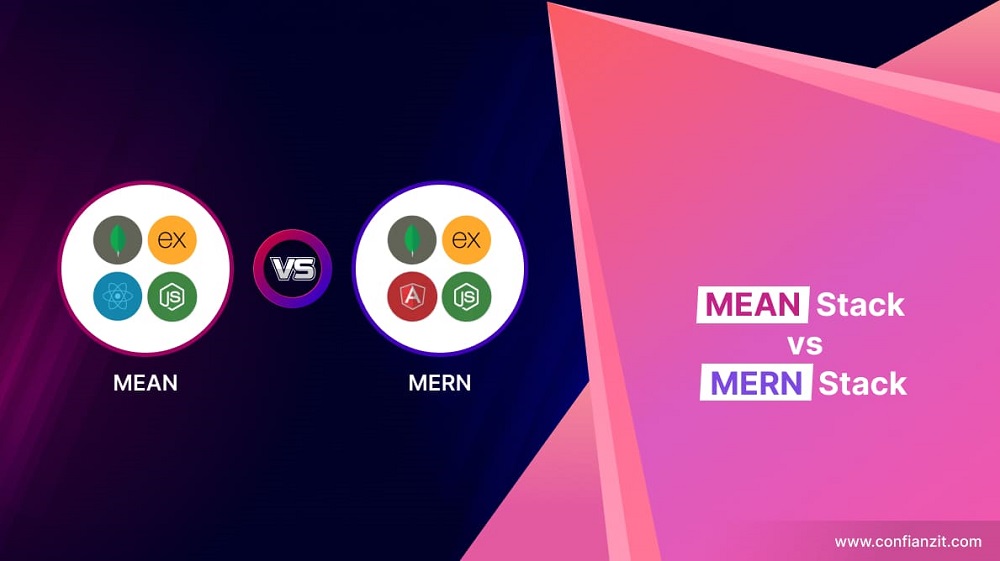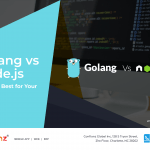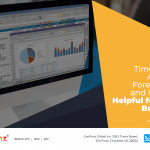When developing a web application, you must choose a web development stack for your project. A web stack is the collection of software you need to produce a web app from the front end to the back end. Stacks include at least an OS, programming language, web server, and database software.
While you can technically use practically any combination of software, some combine better than others, creating standard stacks.
MEAN and MERN are both popular stacks, with quite a bit of overlap in the software used. So it can be difficult to know which is best suited to your purpose (or if there’s enough difference for it to matter). That’s why we will break down the stacks, compare them, and judge what projects they’re best for.
What Are the MEAN & MERN Stacks, and How Do They Differ?
The MEAN and MERN stacks are extremely similar, and, as such, both vie for the top of many lists of best stacks for creating modern web pages.
MEAN
The MEAN stack is composed of the following:
- MongoDB, a developer data platform. MongoDB is an open-source and document-oriented NoSQL database that’s used for data storage and retrieval. It makes data storage more efficient and accessible. More significantly, MongoDB has a powerful search ability making it more scalable than other options.
- Express, a web framework. Express is another open-source program that acts as a web application framework for Node.JS. The framework can handle both single-page and multi-page web apps and has a simple and flexible routing system. It’s excellent for making dynamic websites with minimal effort.
- Angular (formerly AngularJS) for front-end. Its primary use is for single-page applications as well as mobile apps. It provides structure for creating dynamic web apps with HTML, JavaScript, and CSS. It’s maintained by Google, which makes it highly reliable. Angular is especially helpful for cross-platform applications.
- Node.JS: server. Node.JS is a server-side JavaScript runtime environment. It’s based on Google’s V8 JavaScript and WebAssembly engine and lets devs write scalable apps with only one codebase for multiple platforms and different operating systems. It’s handy for real-time web apps like chatbots or streaming services.
The MEAN stack is one of the most popular stacks of today. Since it’s entirely written in JavaScript from front to back end, it streamlines your development and allows you to reuse code in parts of your application.
MERN
If you’ve been paying attention, then you already know there is only one difference in the MEAN and MERN stacks. (This is, of course, based on their names).
MERN comprises MongoDB, Express, React, and Node.JS. So, the only difference in the MERN stack vs. the MEAN stack is that MERN replaces Angular for React. Read our Angular vs. React comparison to learn more about their differences.
React is a JavaScript library that Facebook developed in 2013 for dynamic UI on web and mobile apps. It’s built to be fast and lightweight with minimal coding. It focuses on making interactive and responsive parts for apps that can be repurposed in different ways to make more complex apps with less code.
Advantages and Disadvantages of Using MEAN & MERN Stacks
Since they only differ in that one stack uses Angular and the other React, many of the pros and cons of the two stacks are similar. But even one substitution can affect the whole ecosystem, making one a better choice for your next project.
What are the pros of MEAN?
- JavaScript from front to back
Using the same programming language in all stack parts is a huge advantage. Firstly, you have far more choices for developers since they only need to know one language. And secondly, you can hire a leaner and meaner team since they can work together on all parts of the application.
It also means you have far more cross-platform compatibility since JavaScript works on web and mobile applications.
- Isomorphic coding
The MEAN stack can use isomorphic coding, allowing the same code to be used for the client and server. That single codebase generates web pages for the front and back ends. It also speeds up loading on the user end, since it reduces the number of requests.
- Good at handling errors
Angular uses Typescript, which is excellent for finding bugs early in development. Having a bug finder in the early stages of development makes code maintenance much easier since you don’t have to dig to find issues early on.
What are the cons of MEAN?
- Hard to learn
While Angular is still very popular, it has fallen behind React in recent years. This is largely because of the steep learning curve when learning Angular instead of React. Angular is a complete solution, while React is a library (not a complete solution.) While each type has pros and cons, it does mean that Angular is the more complicated to get good at.
- Sometimes overpowered
The other issue with being very powerful is that Angular can sometimes be overkill depending on your application. The MEAN stack can quickly bog the project down if you’re working on something small and lightweight.
What are the pros of MERN?
- Fast track to release
The MERN stack is excellent for getting your software to the market quickly because of the code’s efficiency. And while it may not offer quite the depth that the MEAN stack does, it also provides a high level of interactivity.
- Easy to use and learn
Ease of use and lower barrier to entry means a broader range of developers to pick from when hiring. It also means that you don’t necessarily need as much expertise.
What are the cons of MERN?
- Difficult to debug
React doesn’t have a built-in debugger, so you have to rely on external tools. That and React’s virtual DOM make it hard to pinpoint the exact location of an error. So tracking down bugs can be unnecessarily time-consuming.
- Not great for large-scale programs
MERN doesn’t handle large quantities of data well. So for larger applications that need something that can quickly parse through large amounts of information, MERN isn’t the ideal choice.
Choosing the Right Stack for Your Project
Picking the right stack for your project can be the difference between a painless development process and one full of problems and holdups. The MEAN and MERN stacks share 75% of the same components, but the difference between Angular and React will affect the process.
Overall, the MEAN stack is the better choice for more in-depth programs that need Angular’s additional tools and features. But for smaller applications, MERN will give you the best of both worlds with high interactivity and functionality in a lightweight package.
If you’re looking for help developing your app, look no further! Confianz can partner with your business to help you realize your plans. Confianz Global Inc. delivers fully integrated software services to meet the unique needs of individual startups, small, and medium-sized business. We develop custom mobile app for iOS and Android. Our services also include Web Development & Odoo ERP Implementation.
So, contact us today to get started!







